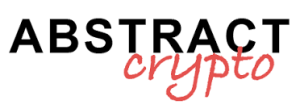Nasdaq enters as a strategic investor in the IPO of Gemini with a commitment of 50 million dollars through a private placement parallel to the listing: a deal that connects the exchange’s custody services to the institutional flows of the listing’s technological platform.
The maneuver, anticipated by Reuters, is consistent with the S-1 filing submitted to the SEC on August 15, 2025, which details the financial results and the terms of the offering.
According to data collected from the analysis of filings and conversations with institutional desks, the prospectus reports a net loss of 282.5 million dollars in the six months ended June 30, 2025, a figure that has impacted the expected initial pricing.
Key Points
- Investment of 50 million dollars by Nasdaq through private placement concurrent with the Gemini IPO.
- Cross-access: Nasdaq clients will be able to use Gemini’s custody and staking; Gemini’s institutional investors will have tools for collateral management through Nasdaq’s Calypso platform.
- Indicative price range of the offer: 17–19 dollars per share; expected fundraising over 300 million dollars.
- Increasing losses: Gemini reported a net loss of 282.5 million dollars in the six months ended on June 30, 2025, compared to 41.4 million in the same period of 2024: an increase of approximately 582%.
Gemini-Nasdaq Agreement Summary: Equity, Services, and Interoperability
The agreement involves the purchase of Gemini shares by Nasdaq through a private placement in conjunction with the start of trading. In parallel, the two companies will initiate a service exchange: Nasdaq clients will be able to access Gemini’s custody and staking solutions, while Gemini’s institutional investors can use Nasdaq’s Calypso platform for a more structured collateral management. In this context, the stated goal is to promote operational efficiency, scalability, and reduction of technical barriers for professional flows.
From the monitoring of market communications and offering documents, it is clear that the operation is designed to facilitate institutional access to cross-border services; industry analysts note that the combination of regulated custody and collateral management tools can reduce capital costs for professional counterparties as early as the first year post-IPO.
Contextual Private Placement: What Changes
The private placement allows capital to be channeled from selected investors near the listing, with a potential stabilizing effect on initial demand. That said, direct purchase of Nasdaq can serve as an anchor for book building and strengthen confidence among institutional investors during the most sensitive phase of the debut, impacting risk perception in the early stages.
Terms of the Offer: Size, Price, and Greenshoe Option
According to the offering documentation provided to market counterparts, the Gemini listing includes:
- Offered shares: 16,666,667 Class A shares;
- Overallotment option (greenshoe): up to approximately 2,500,000 shares for 30 days;
- Indicative price range: 17–19 dollars per share;
- Gross fundraising target: over 300 million dollars.
The parameters are subject to adjustments until the finalization of the pricing, depending on demand and market conditions. It should be noted that any changes may impact the overall size of the offering and the book-building process.
Expected Timelines and Ticker
The prospectus foresees the listing on Nasdaq with the ticker “GEMI”. The roadshow with investors is expected near the start of trading, with timing varying based on the liquidity context and available market windows, elements that often affect the timing of pricing.
Implications for Professional Investors
The anticipated exchange of services strengthens the convergence between traditional finance and crypto. For institutional desks, integration with the Calypso platform can facilitate the management of collateral, margining, and settlement in a more compliance-oriented framework. Additionally, access to custody and staking solutions integrated with the exchange’s infrastructure promises to enhance controls, auditability, and operational governance, with potential benefits for internal processes.
Risks and Fundamentals: Increasing Losses and Revenue Pressure
The economic trajectory remains a critical factor. Gemini reported a net loss of 282.5 million dollars in the six months ended June 30, 2025, compared to 41.4 million in the same period of 2024, with reported revenues of 68.6 million for the period (data taken from the S-1 prospectus filed on August 15, 2025). This dynamic reflects the volatility of volumes, fee compression, and increasing development and compliance costs; factors that demand greater transparency and scrutiny on the marginality and sustainability of the business model.
Competition and Positioning: the Effect on Coinbase and Bullish
With its debut, Gemini could become the third crypto exchange listed in the United States, after Coinbase and Bullish. The entry of a new player has the potential to influence pricing, the range of products – such as custody, staking, and prime brokerage – and technological partnerships. Indeed, new listings in the sector have historically shown phases of high volatility in the initial sessions, with rapid revaluations of multiples in response to changes in volumes and sentiment.
Why the operation is relevant for the market
The alliance between traditional infrastructures and crypto solutions suggests a path towards the institutionalization of digital assets. On one hand, the regulated listing offers greater visibility and access to capital; on the other, it requires strict compliance with disclosure requirements and careful management of operational and compliance risks. That said, the outcome will depend on the response of institutional investors, the sustainability of volumes, and the evolution of the regulatory framework.
Timeline and Next Steps
Gemini has initiated the path for listing and plans to list on Nasdaq with the ticker GEMI. The private placement agreement with Nasdaq represents an important signal for the market, although it remains subject to the final closure of the offer and the market conditions at the time of finalization. In this context, the completion of the IPO will serve as a watershed for the implementation of the planned operational integrations.


